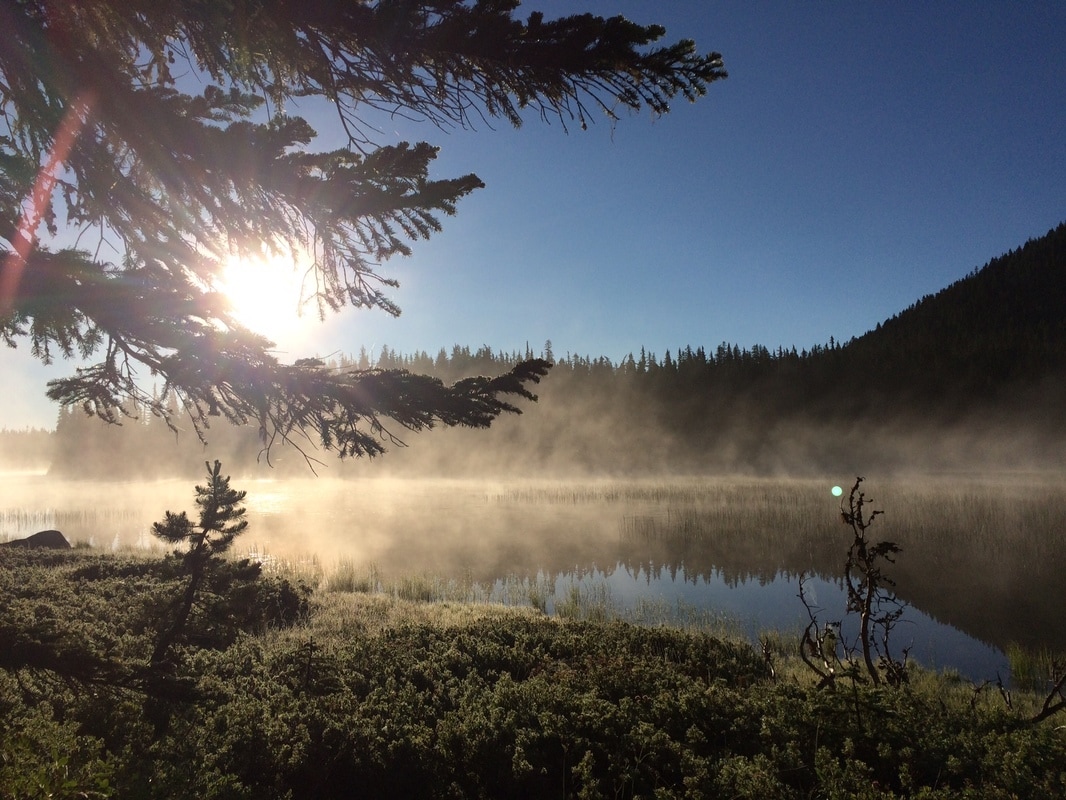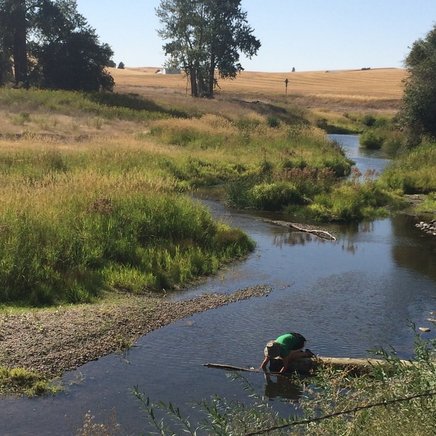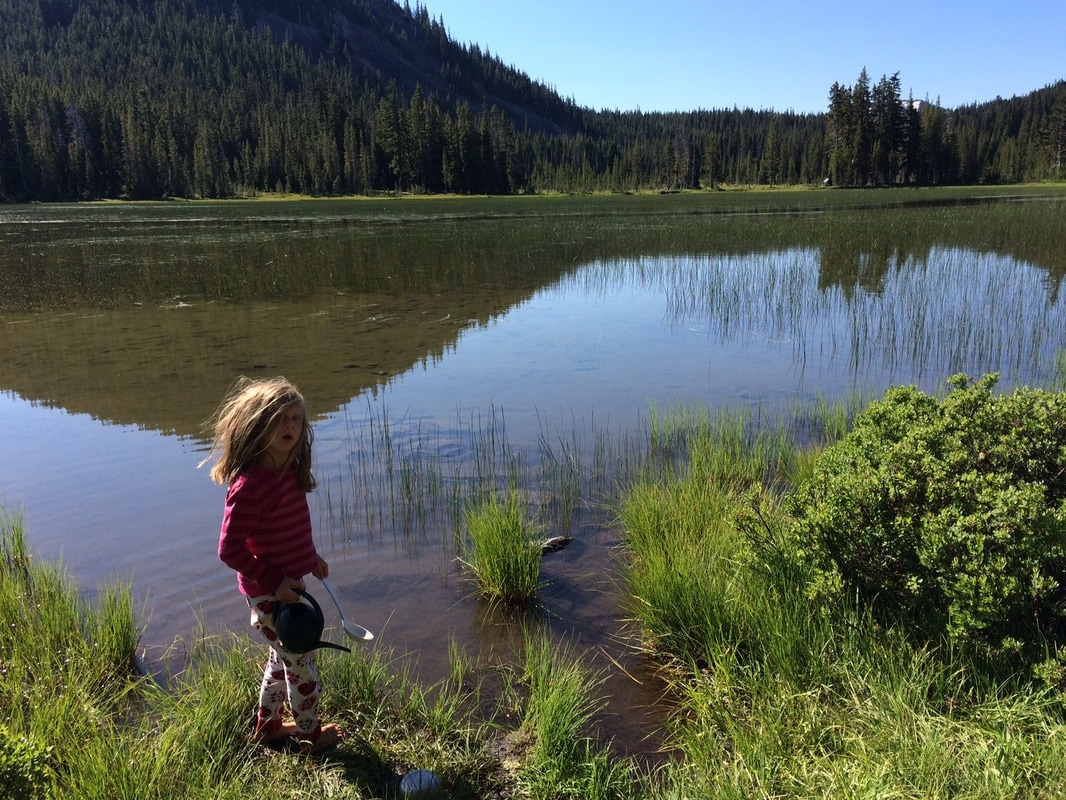In 2016 Adventure Scientists contributed over 15,000 volunteer field days (that’s over 41 years!) to our scientific partners to help them discover solutions to pressing environmental issues. Adria Magrath of Vashon Island, Washington, submitted one of the highest numbers of samples this year for our Global Microplastics Initiative, so we asked her to tell us why she volunteers and some of her collection stories.
By: Adria Magrath
Water holds a special place for me- I am literally surrounded by it because I live on an island. There is no bridge, which means I must take a ferry whenever I want to leave or return to my community.
 Dawn at Breitenbush Lake above 5000 feet in Oregon. Photo by Adria Magrath
Dawn at Breitenbush Lake above 5000 feet in Oregon. Photo by Adria Magrath
As a biologist, I know that molecules of water are used to break apart the molecules of our food so that we can absorb it and transport it in our blood for energy. Water cycles from the earth to the sky and back again to grow plants, erode landforms, create weather, and support animal life from fish to people.
As an individual, I know that water is a force that fosters life. Collecting microplastic samples for Adventure Scientists is a way for me to help increase our understanding of how our habits are impacting aquatic ecosystems and perhaps bring more awareness to this element that we often take for granted.
As an individual, I know that water is a force that fosters life. Collecting microplastic samples for Adventure Scientists is a way for me to help increase our understanding of how our habits are impacting aquatic ecosystems and perhaps bring more awareness to this element that we often take for granted.
 Adria sampling the Palouse River near her childhood hometown in Idaho. Photo by Mike Magrath
Adria sampling the Palouse River near her childhood hometown in Idaho. Photo by Mike Magrath
I keep very busy teaching community college students during the academic year, as well as being a mother and tending to our family homestead in the Puget Sound. My summer months are devoted to reaping riches from the garden, traveling, and collecting scientific data. I chose to collect fresh water samples for the Global Microplastics Initiative because that was where there was the biggest need in my area. It was easy to learn the protocol, use the mobile entry form, and collect samples during my adventures.
In July I had my first experience leaning over a rushing riverbank to collect a water sample. I packed up my five-year old daughter and loaded my brand new high-clearance vehicle for a road trip. After visiting a hotspring near Mt. Rainier, and a cave near Mt. St Helens, we decided to follow an Oregon river valley into the Cascades. We noticed some scenic lakes on the map so I oriented in that direction.
What initially looked like a fairly short distance from the paved road on the map stretched into hours of driving on large cobbled roads high into the mountains. I became increasingly worried that we wouldn’t make camp before dark, but my daughter insisted that we push on to the lake, since she enjoys playing in water. Once we broke into the alpine zone, the road turned into nothing more than a shelf in the rocky slope. At sunset, we finally reached the scenic lake area that sat near Mt. Jefferson Wilderness on the Pacific Crest Trail (PCT).
In the lakeside campground the mosquitoes were so thick that they terrorized my daughter who now had much less motivation to play in the lake. I quickly set up the tent for her escape and constructed a smoky fire to deter the little bloodsuckers. A PCT hiker joined us, and the next morning we were able to provide him with a hearty cooked breakfast of potatoes and (our chickens’) eggs. This qualified us as “trail angels” in his book, and later he went out of his way to locate me. We’ve kept in touch ever since.
 Adria Magrath stops for a selfie while on a solo hike up the Elwha River in Washington
Adria Magrath stops for a selfie while on a solo hike up the Elwha River in Washington
I would encourage adventurers everywhere to find ways to participate in data collection efforts such as the Global Microplastics Initiative. Because it is so resource intensive for scientists to reach all these remote places to collect samples and data, Adventure Scientists can make a huge impact.
If we can all pitch in, we all benefit. I want to live in a world dominated by ideals of reciprocity and helping others. So that’s what I do.
Find out more about our Global Microplastics Initiative and other Adventure Scientists projects by visiting our website and by following us on Facebook, Twitter and Instagram.

